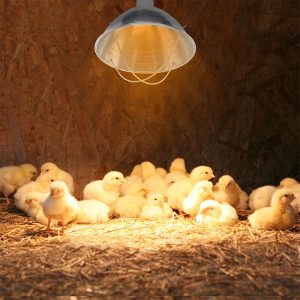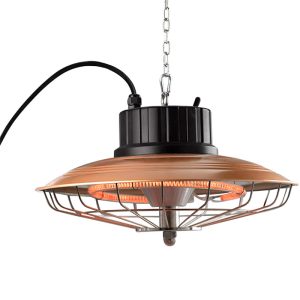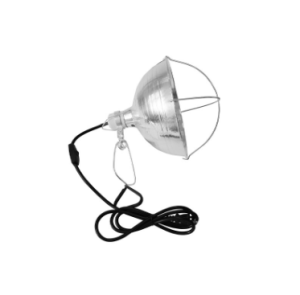The brooder lamp is one of the core equipment in chick rearing, directly affecting the chicks’ body temperature regulation, health status, and survival rate.
Key Points for Selecting a Brooder Lamp
Selecting a brooder lamp should revolve around the three principles of “suitability, safety, and efficiency”, with a primary focus on the following four aspects:
- Wattage Selection: Match the Scale and Environment
Wattage directly determines heating capacity and should be chosen based on the number of chicks and the ambient temperature. Generally, a heating power of 25W is recommended for every 30 chicks. If the number exceeds 50 chicks, or if the ambient temperature falls below 15°C (59°F), opt for a lamp with 60W or higher to ensure even heat distribution. For small, enclosed brooders, the wattage can be appropriately reduced to avoid localized overheating. - Safety Assurance: Prioritize Products with Comprehensive Protection
Safety is the primary concern in brooding. When selecting a lamp, pay attention to three key points: First, the fixture should be equipped with a protective shield and heat insulation mesh to prevent bulb breakage or chicks from getting burned by accidental contact. Second, it should come with sturdy mounting brackets to prevent the lamp from falling and injuring the chicks. Third, prioritize aluminum or ceramic lamp housings, as they are heat-resistant and can reflect heat, improving heating efficiency while reducing safety risks. - Light Color Selection: Avoid Harsh Light Stimulation
Chicks are sensitive to light, and harsh light can easily cause stress, affecting their rest and feed intake. It is recommended to choose lamps with a color temperature of 2700K – 3000K (warm white). This provides soft, natural-like lighting for basic illumination without disrupting the chicks’ circadian rhythm. Avoid cool white or high-brightness lamps, especially for nighttime brooding, where ceramic heat lamps emitting no visible light are preferred. - Scenario Matching: Choose the Type Based on Rearing Scale
Small-scale/Household Rearing (up to 50 chicks): Prioritize 40W – 60W infrared lamps for their cost-effectiveness and simple operation.
Small Farms (50 – 200 chicks): Consider using high-power infrared lamps of 100W or more, combined with timers to automate switching, reducing labor management costs.
High-Value Poultry Rearing: It is advisable to choose intelligent temperature-controlled lamps for precise temperature management, which helps lower mortality rates and improve rearing profitability.
Conclusion
The selection and use of brooder lamps are fundamental aspects of chick rearing. Decisions should be made by comprehensively considering one’s own rearing scale, poultry breed, and environmental conditions. Only by choosing the right equipment and applying correct methods can a suitable growth environment be provided for chicks, thereby enhancing survival rates and subsequent growth performance, and laying a solid foundation for rearing profitability.







